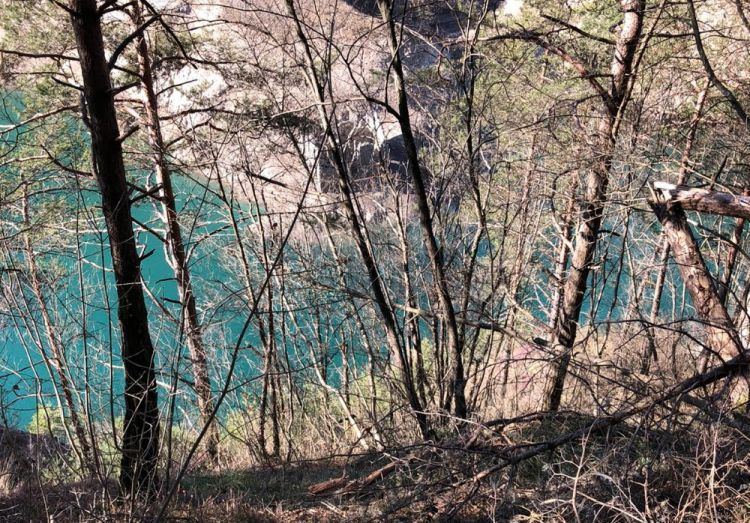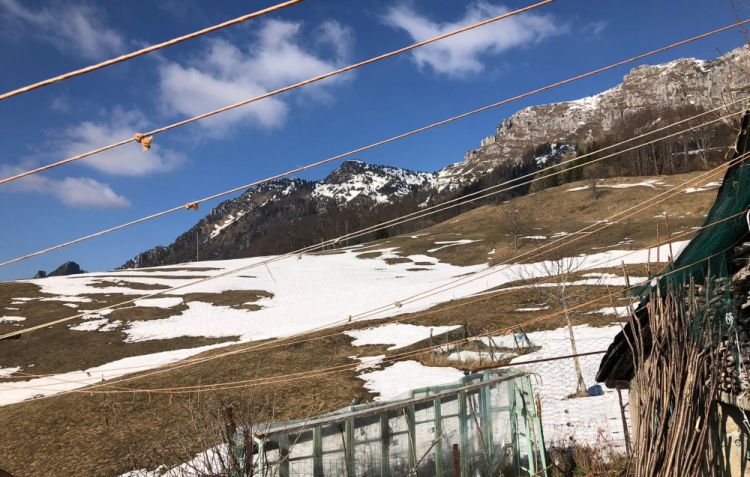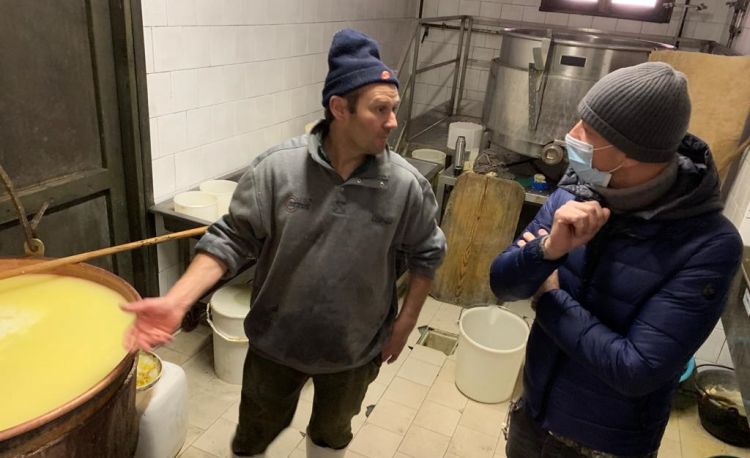Speaking of food, cooking, raw materials and techniques with Riccardo Camanini, chef at Lido 84 in Gardone Riviera, never leads to an ordinary conversation. Soon, if not immediately, the chef, with his culture, his curiosity, his refined mind, will lead the discussion to unordinary and uncommon directions. This happened recently when we asked Camanini to tell us about the discovery of a product, and a producer, who had particularly stimulated his curiosity and charmed him for some reason.
«I'd like to talk about a producer I visited a few days ago», he said. And when we asked him how he runs his research of the raw materials that end up in his food, he was surprised when he replied: «I'm not sure I can answer. I don't plan: researching ingredients is clearly crucial for someone with my job, but in my case it's not planned in detail. It's a result of curiosity, fortune, word of mouth: I'm from Bergamo, I'm not really familiar with the area of lake Garda, hence when I hear about an artisan, I want to meet him. For instance, they told me that in Valvestino there's a small production of a cheese called Tombea. Some common acquaintances mentioned Germano Eggiolini and I visited him a few days ago».

Behind the trees, you can see the remains of the customs in Valvestino
Riccardo Camanini's tale continues with a detailed and of course passionate description of the journey that led him to Eggiolini's farm in Magasa, a small village of some 100 hundred people in the north-east border of the province of Brescia: «We went there on a Sunday, driving across Valvestino, which I had never visited. I was surprised by how at some point you see the remains of the customs, which shows what was once the border with the Austrian empire: I had no idea that virtually 'on top of my head', in that region, there was such an important post: that road had surely been crowded with stories, and people and raw materials».
«Today – the chef continues – it's not very used. It just goes across three or four very small villages. The nature has a striking beauty, because in the Fifties they built a dam here. It's not the dam that is beautiful, but when it's not full, it allows you to see the road that people once took to pass the border, now full of vegetation. And then there are the remains of the customs. When we arrived in Magasa, I was struck by another unexpected cultural influence».

The mountains and the fields in Magasa
We hang from Riccardo Camanini's lips: «I noticed some thatched roofs, like those used for cottages in England and Scotland [it's the Fienili in Cima Rest]. That area had been dominated by the Celts, hence there's been an overlapping of cultures in this area which now seems remote, a place where you end up because you go to buy that cheese, or because you like riding your bike in the mountains. And it's fascinating that instead in the past both the Celts and the Austrians had occupied the area for strategic regions. Going back to our days, it's nice to see these woods and these very sloped and very clean fields, that explain the life of the woodsmen who are still here, and take care of the woods and the region, of the cows and goats which help keep the fields clean, which are beautiful under the sun».
We wanted to talk about cheese, but to begin with the chef from Lido 84 with his simple and special humanity reminds us the important and charm of the story of the places and the people from which come the ingredients we fall in love with.
The meeting with Germano Eggiolini was no less in terms of charm, says Camanini: «I'm always interested in the human, emotional side: this family-run business is genuinely transparent and natural. I enjoyed having a chat with the family, observing how they live in this context that clearly has a strong impact on them. It's an important choice of life, almost ancestral, which requires a precious and surely arduous dedication».
In Eggiolini's words you can notice the dedication and passion in following a family story that has been going on for three generations: «My grandfather on my father's side established the business. My father then continued it and now there's me. I have three children, we'll see if they'll want to continue. People must be free to choose their destiny. Of course it would make me proud, but I also known I cannot take it for granted because these jobs are more and more difficult, with all the bureaucracy».

Riccardo Camanini observes the making of Tombea cheese
And in some way it's the "bureaucratic" component that has created the
Tombea denomination, which refers to the cheese
Eggiolini and three other producers (all members of a small Consorzio) make: «The tradition of this cheese –
Germano explains – is some centuries old but it's only in 2000, with the arrival of the European regulations and certifications, that a local mayor decided to give it a name and to name it after the mountain behind us. It's a cheese made with semi-cooked curd, produced with 50% full fat milk and 50% of milk to which the cream has been removed, which we use to make our butter».
Butter and
Tombea: these are
Eggiolini's two products. And listening to the process used to make his cheese it's easy to see a connection with the more famous
Bagòss, typical of an area very close to here. But there are some differences: «Bagòss –
Germano says – is only made with milk to which they have removed the cream that surfaces. This makes
Tombea fatter, and makes it possible for it to age faster: after 6 months you can already eat it, though I believe it's at its best after between one year and a half and three years of ageing». And then there's the addition of saffron when warming up the curd, which is typical of Bagòss and recalls, as
Camanini points out «other stories of merchants and trades, that gave access in that area to that spice then used to soften the cheese».
And here comes the tasting. The chef from
Lido 84 says: «When we opened the
Tombea cheese we smelled a very characteristic scent... almost like anchovies, or rather the oil in which you preserve anchovies. Which add to the more delicate aroma of the oil of flax seeds which is massaged on the cheese to protect it, and which in the case of Bagòss is stronger. Tombea is a very tasty cheese, in which the aromas of the pastures are clear, and especially so for the cheese made with the summer milk». «What gives our product its character –
Eggiolini adds – is the aroma of what the cows eat, which we then find in the milk: the grass and the hay from our pastures».
Who are
Germano Eggiolini's clients? «Firstly, consumers who visit us, and buy from our store. Then there are some shops in the valley that sell our cheese, and some restaurants, pizzerias, agritourism businesses. Of course, this year was particularly hard: people couldn't move, so our clients were only local. Restaurants are closed, so we don't get any orders. In other words, we're ageing our cheese much longer, but it wasn't our choice: it's a difficult time for everyone, including us».
We asked Germano to tell us how they eat Tombea: «On top of eating it as it is, we grill it, especially the less matured one, and make some excellent risotto, we also melt it in our "polenta tiragna". Some cheese ages over three years, only for us, so we can also use it as grated cheese».
Riccardo Camanini instead will tell about its use the next time: «It's a new product for me, I already have some ideas in mind but I must test them, and perhaps I must pay another visit to Germano. What I'm sure of is that it's really a great cheese, that has nothing to envy to other more famous and prestigious products ».
Translated into English by Slawka G. Scarso